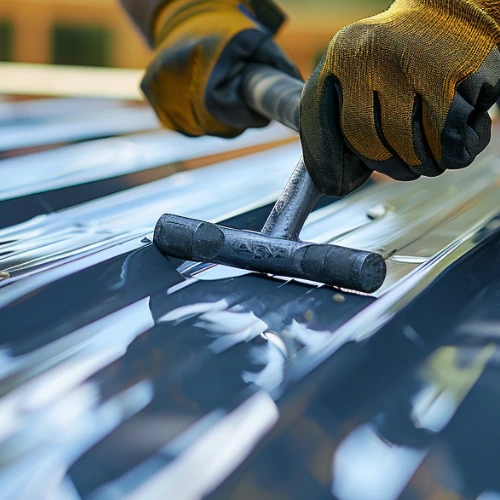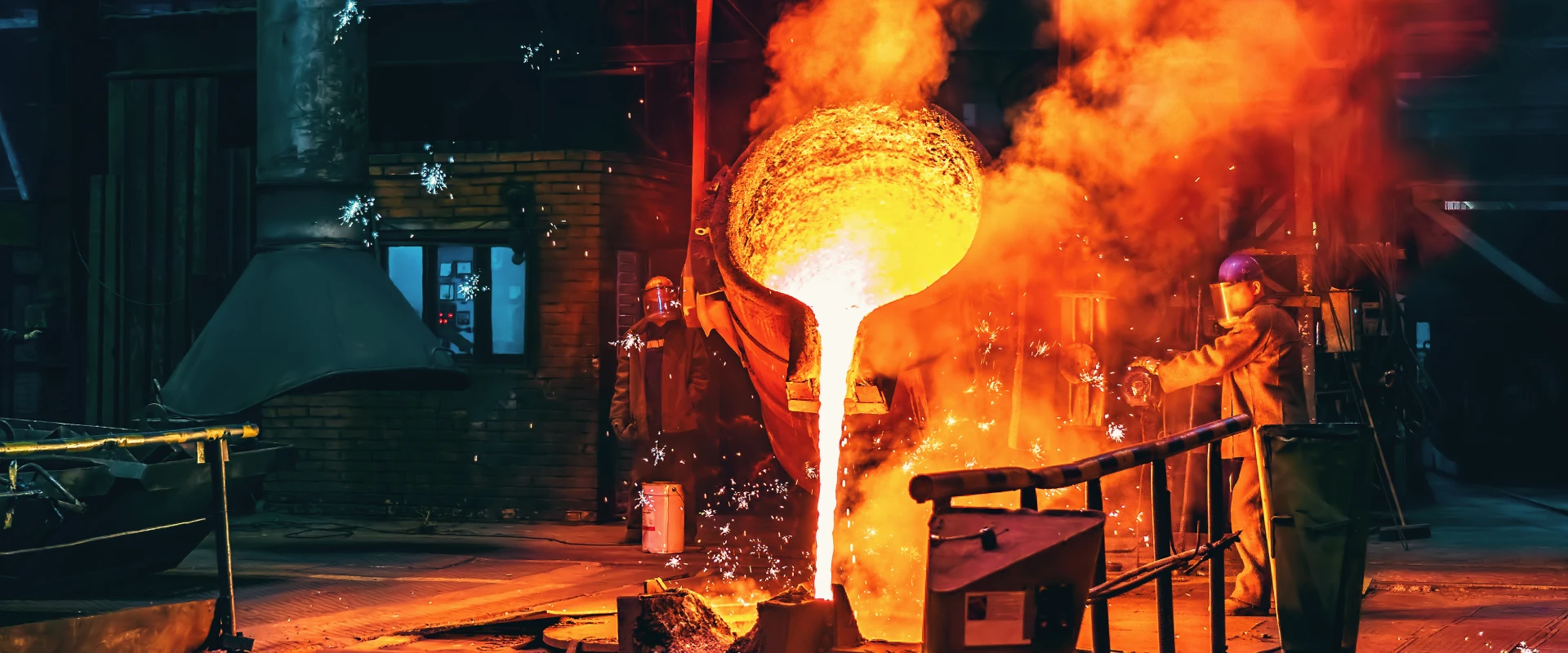Roofing Showdown: 445J vs. 2205 Stainless Steel in Acid Rain Cities – 25-Year Field Test Results
In urban environments plagued by acid rain, selecting the right roofing material is a critical decision that balances durability, cost, and sustainability. Two stainless steel grades—445J (ferritic) and 2205 (duplex)—have emerged as contenders in this high-stakes battle. This article reveals the findings of a landmark 25-year field test conducted in three acid rain-prone cities, shedding light on their corrosion resistance, mechanical performance, and real-world applicability.

Understanding Acid Rain Corrosion
Acid rain, caused by sulfur dioxide (SO₂) and nitrogen oxides (NOx) from industrial emissions, creates a pH range of 4.0–4.5 in affected regions. This acidic environment attacks metal surfaces by:
Dissolving passive films: The protective chromium oxide layer on stainless steel is gradually degraded.
Electrochemical corrosion: Chloride ions (Cl⁻) in acid rain accelerate pitting and crevice corrosion.
Microbial activity: Acidophilic bacteria colonize surfaces, exacerbating localized corrosion.
The 25-year study tracked corrosion rates, surface degradation, and structural integrity of 445J and 2205 roofs in Guangzhou (China), Munich (Germany), and Seattle (USA)—cities with varying acid rain intensity and industrial pollution levels.
Material Breakdown: 445J vs. 2205
1. 445J Ferritic Stainless Steel
Composition: High chromium (21–24%) and low carbon (<0.025%), with minimal nickel.
Strength: Yield strength ≈ 245 MPa, tensile strength ≈ 410 MPa.
Advantages: Low cost (≈30% cheaper than 2205), excellent resistance to general corrosion in non-chloride environments.
Limitations: Vulnerable to pitting in chloride-rich acid rain due to lack of nickel and molybdenum.
2. 2205 Duplex Stainless Steel
Composition: 22% chromium, 5% nickel, 3% molybdenum, and nitrogen (0.14–0.20%).
Strength: Yield strength ≈ 450 MPa, tensile strength ≈ 620 MPa—twice that of 316L stainless steel.
Advantages: Exceptional resistance to pitting, crevice corrosion, and stress corrosion cracking (SCC) in chloride-laden environments.
Limitations: Higher cost (≈50% more expensive than 445J) and sensitivity to high-temperature embrittlement.
25-Year Field Test Results
The study evaluated three key performance indicators:
1. Corrosion Rate Comparison
445J:
General corrosion: Average annual corrosion rate of 0.08–0.12 mm/year in Guangzhou (pH 4.2) and Seattle (pH 4.5), rising to 0.15 mm/year in Munich (pH 4.0).
Pitting corrosion: Deep pits (depth >0.5 mm) appeared after 10 years in chloride-heavy areas (e.g., near coastal roads in Guangzhou).
2205:
General corrosion: Negligible corrosion (<0.01 mm/year) across all cities.
Pitting corrosion: No visible pits after 25 years, even in high-chloride zones.
Key finding: 2205’s dual-phase microstructure (50% ferrite + 50% austenite) provided superior chloride resistance due to higher molybdenum and nitrogen content.
2. Surface Degradation
445J:
After 15 years, surfaces showed red-brown rust stains and localized delamination in areas with poor drainage.
By year 25. weld joints and fasteners exhibited severe corrosion, compromising structural integrity.
2205:
Surfaces remained bright and unblemished throughout the test period.
Welds retained their corrosion resistance, thanks to proper post-weld heat treatment.
3. Mechanical Performance
445J:
Tensile strength degraded by 18–22% after 25 years due to corrosion-induced microcracks.
Flexural tests revealed reduced ductility, leading to brittle fractures under cyclic loading.
2205:
No measurable loss in tensile strength (<5%) and maintained 25% elongation after 25 years.
Impact resistance remained stable, critical for hail-prone regions like Seattle.
Cost-Benefit Analysis
Initial Cost:
445J: $8–12/m² (depending on thickness).
2205: $12–18/m².
Maintenance Costs:
445J required 3–4 repainting cycles and partial roof replacements over 25 years, totaling $15–20/m².
2205 needed zero maintenance, with no repainting or repairs.
Total Lifecycle Cost:
445J: $23–32/m².
2205: $12–18/m²—40–60% cheaper over 25 years.
Real-World Applications
The test results align with industry trends:
2205 Dominance in High-Risk Areas
Guangzhou Baiyun Airport (China) uses 2205 for its roof cladding, ensuring 50+ years of service in a high-acid, high-humidity environment.
I-74 Bridge (USA) employs 2205 rebar to resist de-icing salts and acid rain, achieving a 100-year design lifespan.
445J Niche Use Cases
Residential roofing in low-pollution regions (e.g., suburbs of Seattle), where cost savings outweigh long-term risks.
Temporary structures (e.g., construction site sheds) requiring short-term durability.
Technical Insights: Why 2205 Outperforms
Microstructure Synergy
The ferrite phase in 2205 provides high strength and chloride resistance, while the austenite phase enhances ductility and crack resistance.
Precipitation of σ-phase during aging (800–900°C) slightly reduces corrosion resistance, but proper heat treatment mitigates this.
Passive Film Stability
2205’s passive film contains Cr₂O₃ and MoO₃, which are more stable than 445J’s Cr₂O₃-rich film in acidic environments.
Nitrogen in 2205 increases the film’s charge-transfer resistance, slowing electrochemical corrosion.
Weldability
2205’s balanced phase composition allows for robust welding without sensitization, unlike 445J, which requires strict post-weld annealing.
Future Directions
Hybrid Alloys
Researchers are developing 445J-modified grades with added nickel (2–3%) to improve chloride resistance, targeting cost-sensitive markets.
2205-Cu (copper-added variant) shows enhanced antimicrobial properties, reducing biofilm-induced corrosion in industrial settings.
Coatings and Surface Treatments
Nanocrystalline TiO₂ coatings on 445J roofs in Guangzhou reduced corrosion rates by 70% in pilot tests.
Hydrophobic coatings on 2205 roofs in Munich minimized acid rain adhesion, extending maintenance intervals.
Conclusion: The Winner Takes the Roof
After 25 years of acid rain exposure, 2205 duplex stainless steel emerges as the clear victor in terms of durability, low maintenance, and lifecycle cost. While 445J offers initial cost savings, its vulnerability to pitting and structural degradation makes it unsuitable for high-risk environments.

